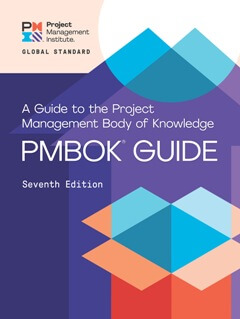With the advent of Covid-19, most teams in practically every industry have been hard-hit with uncertainty on how to sustain performance and ensure they remain actively engaged to the goals. Stakeholder satisfaction has gone south for most of these teams and it is increasingly becoming frustrating for leadership to regain their glorious past of co-located teams. Talking to one of my friends who is a project manager, he told me “I have simply lost it. Nothing is working anymore, and our backlog looks like a jungle.” This is not unique for only this team but is something that most teams are continuously experiencing. It is even worse for teams that previously were struggling to function when they were co-located and have now been thrown in unfamiliar territory. Within the last two years, my experience with other teams has shown that there is a myriad of challenges but there are some which are common, despite the industry the team is working in. I will highlight 3 of these issues and then in my next series, I will address my supposed approach to handling them.
Lack of unified goals
It used to be easy to define a goal around which a team could rally their focus while working on a set of issues. In Scrum, this has always been the norm before any set of issues are chosen by the team. The product owner defines the goal and a whole list of prioritized issues from which the team chooses, based on their understanding of these issues and their velocity. Arguably, most teams did not find this to be an issue and it is quite impressive that Agile defined this approach so well, addressing the traditional centralized authority. However, while working remotely, it is increasingly becoming difficult to have an understandable unified goal which teams can use to deliver the next increment. This is not because they don’t communicate, but it is because the level of team engagement has been severly compromised, that most people find it frustrating to remain actively motivated. I have seen fluffy sprint goals such as “Solving issues from Revision 3.2.4“. The problems with such goals are that they create dependencies and do not really motivate the team. Some of the goals are defined based on a single stakeholder feedback, which in actual sense creates imbalance in stakeholder satisfaction. By using feedback from a single stakeholder, the whole team gets blinded to the needs of the whole stakeholder fraternity across the spectrum. There is a genuine need that goals aren’t individual-centered, if the whole team is to gravitate their efforts around them to achieve satisfaction equilibrium.
Lack of Support from Top Management
Teams working without the support of the top management are prone to experience instability and disruptions within their iterations. This is commonly in the form of in-coming work from customers and colleagues, urgent hotfixes, or even changes of the team’s plan by the management. Such teams suffer from being unable to execute their work within locked timeframes that allow them to deliver an incremental release of the product. When management is not in tandem with the activities of the team, do not participate in reviews nor are they aware of the current status, then the two units drift apart. It is common to see efficient agile teams being managed by leaders with old-mentality of project management. This causes rifts in achieving any meaningful progress, mostly because the team feels that they are not respected by the management and their efforts are not appreciated. The bigger and “ugly” caveat is that the team finds it difficult to tie their activities to the goals and objectives defined by the management. On the lower side, it leads to a frustrated team at a crossroads on achieving their sprint goals and satisfying the demands of the management. On the upper side, it leads to an organization that cannot adapt appropriately to changes, failing in achieving to align the teams’ activities to the strategic goals and non-achievement of BRM.
Sect-like/Religious practice of Agile
While agile is flexible and can be customized to different industries, it is not uncommon to see teams embracing agile and following it rigidly. Often, when top management advocates for teams to embrace agile, there is a poor change management process to help the team transit to the new way of working. If the team does not understand why they should use agile, or the activities and ceremonies of agile are followed in a sect-like manner without any understanding, it is doomed to fail. Team members sooner or later feel the pressure to deliver incremental value during each sprint. It feels like being put on a pedestal without having any room to gasp for air. Working virtually, compounds the problem because the team members lack face to face interaction (one of the 12 agile principles). Additionally, it introduces long waiting times that delay the workflows. Teams should be allowed to embrace agile and suit it to achieve their objectives. Sure, this does not mean compromising on the activities or goals of the team, but by remembering the 4 values of agile, it is believable that agile can be embraced even by the faint-hearted. The beauty of agile is seeing the incremental value the team produces at regular intervals. Combined with the transparency of the team’s progress, it enables the team to be reflective and adaptive, ultimately becoming even more productive. The team should be able to see the outcome of their activities and relate to the goal they are achieving, and whether it is delivering value or not.




